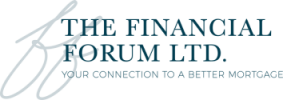A home of one’s own is a dream for everyone. Not only is it a place where you create shared memories with people you love, it is also one of the largest assets most individuals create in their lifetime, and one that can be a source of financial security.
But how does one own a home in Canada? For first-time buyers of a home in particular, it can be a complex path to navigate. Where do you start?
Before you start the process
Buying a home is a big commitment. It means you will be taking upon yourself the burden of a debt that will need to be paid off over many years. So, you need to evaluate a few things before you even begin to identify suitable properties and talking to banks for a loan:
- Are you in a position to make space in your budget for the mortgage repayments that will start as soon as your mortgage begins?
- How much of a monthly repayment burden are you willing to take on?
- Do you have an idea of how your financials will pan put over the next two or three decades, the typical duration of mortgage loans, in order to ensure you are taking on a responsibility that can be serviced.
- No lender will lend the full value of the property. This means that the balance amount will have to be paid by you in the form of a down payment. If you don’t already have the amount saved up, start doing so now.
- Review your credit score and ensure you are able to keep it at a level that does not disqualify you.
- Provide for additional funds to pay for closing costs, usually estimated at between 3 and 5% of the purchase price.
Once these preparatory steps are in order, you can initiate the process for buying your first home.
How to buy your first home
Organize documentation
Taking a mortgage loan is a formal, evidence-based process and will require documentation for many aspects. It is a good idea to prepare as much of it in advance as you can.
Check for rebates and grants
A number of financial incentives can be availed by first-time home buyers that can reduce the financial burden. For example, the Home Buyer’s Plan allows up to $35,000 withdrawal from your RRSP for a home down payment, tax-free.
Identify suitable mortgage options and shop for good rates
Zero in of the type of mortgage you would want to take. Do you want an Open or a Closed mortgage? Do you want a floating or a fixed rate? And, most of all, shop for the best rate. This is a commercial transaction. You are batting for your financial benefit, as much as the lenders are for theirs.
Obtain a mortgage pre-approval
This is an important step and tells everyone that you are serious and ready to move forward by sharing some very personal financial information with potential lenders.
Pre-approval does not have a cost attached to it and does not commit you to the lender. It is a low-risk way that helps you get a better understanding of how much you can afford to spend on a house, monthly instalments and interest rate.
You can lock-in the rate for a defined period. Honouring it is your choice. If you find a better one in the interim, or if rates drop, you can go for the better one.
Find a home
This need not be sequential. Many people already have a good idea of the place they want when they are in a position to afford it. But, if you don’t already have a place identified, or the process under way, you should be doing so at this stage. There is no shortage of real estate experts who can help find a suitable property.
Finalize
The sequence usually is:
- Submit offer to purchase.
- Pay deposit once offer gets accepted (as an advance against the purchase price).
- Finalize mortgage financing and arrange for a home inspection.
- There could be modifications based on the inspection.
- Once financing is confirmed, pay down payment and transfer title to the home into your name.
The First Step
Buying your first home can be challenging. The Financial Forum seeks to make the process simple and hand-hold you along the way. Reach us on (905) 265-0246 or mortgages@thefinancialforum.ca.






